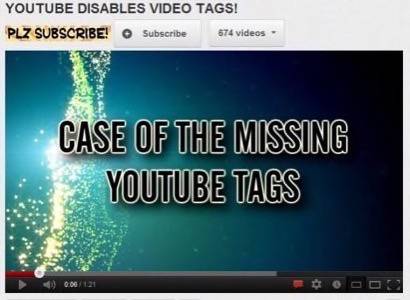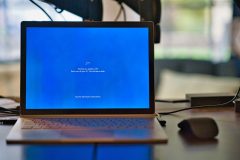
YouTube’s decision to hide search tags – an effort to fight spam – is drawing passionate responses to the move. Some say it’s overdue, and others think it will cause more problems than it is intended to fix.
The tags still exist as private information that can only be seen by the video poster.
Yesterday, YouTube said via its Twitter and Google+ page that the tags had been manipulated for unfair advantage by some members.
The spammers copied tags from trending videos and used them to trick people into clicking on their links, inflating their traffic and netting them ad revenue based on those clicks.
“You may have noticed – we made tags private, so you can’t see them on the watch page anymore. Viewers weren’t using them, and some abused them. Please keep providing tags when you upload, though – they’re important tools to help promote and connect your videos!” the post read.
Tag abuse became a hot issue this year when a group of young women known as the “reply girls” gamed YouTube’s related-video algorithm over eight months for personal profit through inflated ad views.
Armed with push-up bras and search-engine prowess, the reply girls made $10,000 to $40,000 a month by enticing male viewers to click on their unrelated minute-long video replies focused on their breasts. Some of these young women made as many as 10 videos a day, one for each newly trending video beginning in July 2011.
YouTube shut down the reply girls in early March, labeling their antics “spam,” by rewriting the related-videos algorithm and changing the way video views are counted.
YouTube had tallied initial clicks, a fact the reply girls exploited. Once people realized they had been tricked into watching a reply girl video rather than a legitimate reply, they left in seconds, but that initial click was registered as a view, and the women were paid as such.
Fallout from the reply girl scheme still plagues the video-sharing site. In a Locker Gnome blog post published Aug. 16 about the tag changes, Swedish writer Maximilian Majewski called out the reply girls for abusing the tag system “to great lengths.”
Majewski wrote, “[m]aking tags private is a long overdue decision,” a sentiment echoed by other YouTubers.
Not everyone views the change as a good move, however.
Jack Durst, a host on Tahoe Network TV, pointed out on the YTCreators Google+ page viewers weren’t clicking on video tags because the tags were “buried at the bottom of the description where nobody sees them.”
If the Google-owned company moved the tags “to a control at the top of the ‘related videos’ column that changed the content…by what tag you chose, it would quickly become a dominant mode of navigation,” theorized Durst.
Still others pointed out that by hiding the tags, the community wouldn’t be able to tell if people were actually abusing tags. YouTube has heavily relied on the community to police itself against bad behavior, but if the community can’t see the bad behavior, how can it flag videos and users for tag abuse? they asked.
“What is to stop UPLOADERS from abusing tags by loading them with things that have nothing to do with the video, but are popular?” asked @TheReallyRick, a YouTuber and iCNN reporter, on Twitter.
Besides using tags that are unrelated to a video, tag abusers also engage in a practice called “spam tagging,” where they write the same tag multiple times in order to increase their video’s ranking.
Hiding tags will prevent people from copying and pasting the tags of trending videos in order to get views, but it won’t stop either of the two aforementioned issues.

















